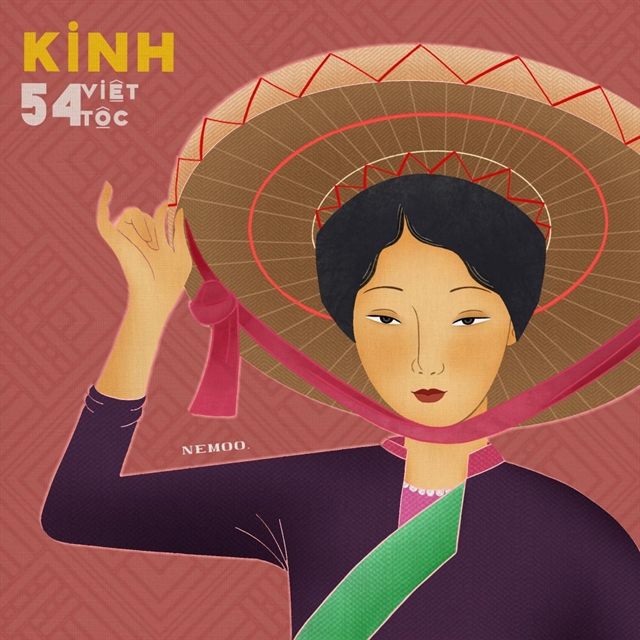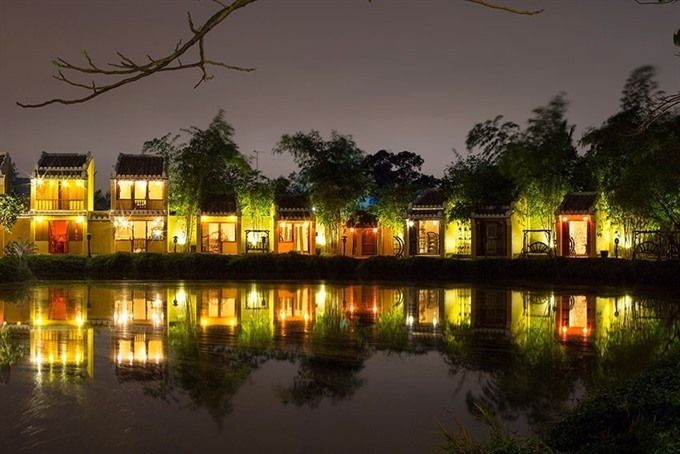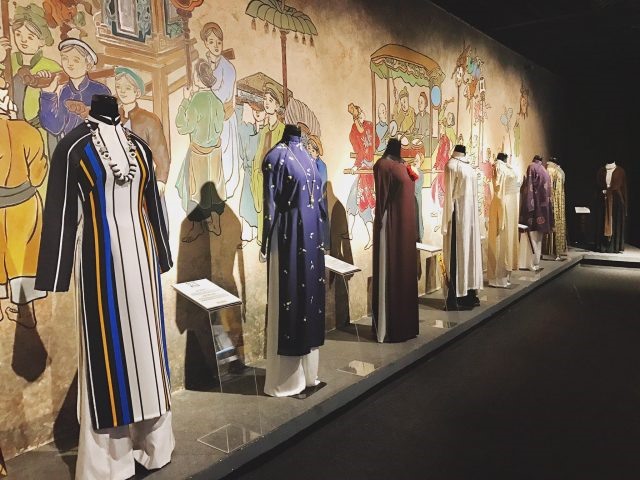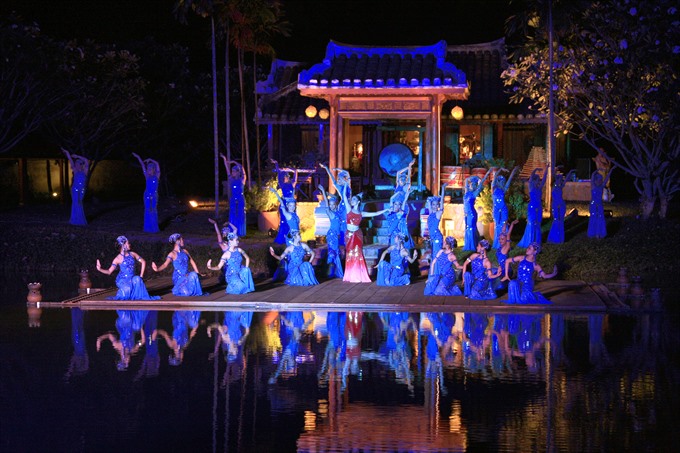 Features
Features

The beauty of áo dài (traditional long dress) and its diversified adaptations are reflected through exhibits at the Áo Dài Museum in HCM City.
 |
| A part of the museum is dedicated to Hội An Old Quarter. Photo courtesy of Dấu Ấn Việt Nam Company |
by Minh Thu
The beauty of áo dài (traditional long dress) and its diversified adaptations are reflected through exhibits at the Áo Dài Museum in HCM City.
Founded in 2014 by designer Lê Sĩ Hoàng, the museum has become a popular destination for Vietnamese and foreign tourists.
Located in Long Thuận Garden, District 9, the 2ha museum embraces traditional wooden architecture with rice fields, bamboo bridges and lotus ponds.
Designer Hoàng said it took 12 years for him to establish the museum thanks to his love for the traditional attire.
“The long robes have aesthetic, historic and cultural values,” he said.
 |
| Traditional long dresses in different periods on display. |
“The dresses help people look more graceful, but also require them to behave and move carefully due to the sophisticated designs and long folds.”
“The dresses show off the beauty and elegance of both men and women.”
From the basic design in the 17th century, the dress has changed from the Le Mur long dress in the 1930s, the hippy long design in 1960s and other designs inspired by different cultures from around the world.
Hoàng said the áo dài was an important expression of traditional culture and the national costume. Both men and women wore the dress on important occasions, so the museum was opened to honour it.
“I hope the museum will preserve the Vietnamese long dress and promote it around the world,” said Hoàng.
At the museum, visitors can view 500 long dresses from different periods, from the first designs in the 17th century to the modern designs today.
 |
| The peaceful landscape of the museum. |
On display are garments owned by the Nguyễn (1802-1945) royal family, and dresses belonging to the country’s first female general Nguyễn Thị Định (1920-92), as well as former Vice President Nguyễn Thị Bình who signed the Paris Peace Accords in 1973 on behalf of the National Front for the Liberation of South Việt Nam, and diplomat Tôn Nữ Thị Ninh.
Stories about these long dresses and their owners are also featured.
Museum manager Huỳnh Ngọc Vân said: “Beyond the function of formal attire, each long dress has its own story, journey and mission.”
The museum also showcases dresses worn by cải lương (southern reformed opera) People’s Artist Bảy Nam, ca trù (ceremonial singing) artist Nguyễn Phú Đẹ; actress Hồng Ánh and the dress she wore to attend Cannes 2013; and businesswoman Thu Hương and the dress she wore to compete at Mrs World 2011 in the US.
“Some people are not particularly famous, but they are important in the fields they are working in,” said Vân.
 |
| An art performance held at the museum. |
“We are so happy that visitors can learn more about the people who wore these outfits.”
The museum also houses exhibitions of Bàu Trúc pottery, a traditional handicraft of the southern and central people, silk scarves and other accessories for long dresses.
The museum also hosts art performances, exhibitions, fashion shows and seminars to get visitors, especially children, involved in designing long dresses.
Thiều Thị Tân, a former revolutionary prisoner who was held at Côn Đảo Prison, said she was moved to tears by the museum.
“I can feel the soul of the nation through these exhibits,” she said.
“Designer Hoàng told me that it’s time for each of us to protect and promote our national culture. This museum is a way of doing that.”
“It’s not a place to store traditional costumes, it’s a place to preserve our culture.” — VNS

.jpg)


.jpg)